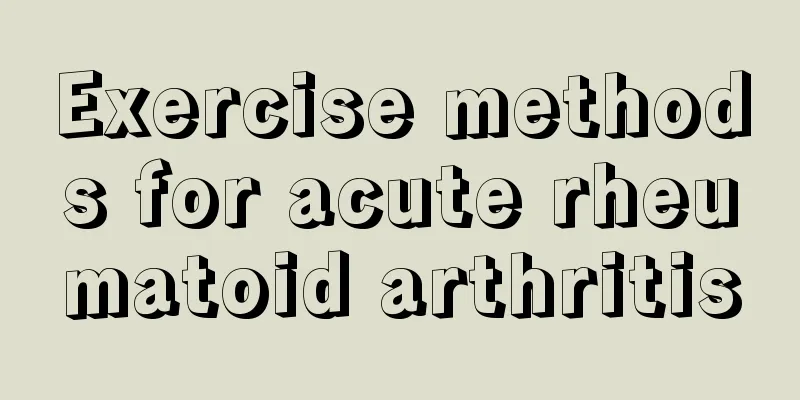Will blood vessel obstruction cause arterial symptoms?

|
Vascular obstruction is more common in middle-aged and elderly people around 50-60 years old. The chance of occurrence will be higher in patients with arteriosclerosis. Because of the history of vascular disease, the symptoms of vascular obstruction will be more severe. Vascular obstruction includes many types and will appear in different places, but once these places have vascular obstruction, the harm caused will be quite large, so everyone must be careful in normal times. symptom (I) General symptoms: This disease is more common in elderly people over 50 to 60 years old with arteriosclerosis, some with diabetes Medical history. Symptoms often occur when the patient is at rest or sleeping, and gradually reach a peak within 1 to 3 days. Some patients have had one or more transient ischemic attacks before the onset of the disease. Except for severe cases, symptoms gradually reach a peak within 1 to 3 days, consciousness is usually clear, and there is no obvious increase in intracranial pressure. (ii) Localized neurological symptoms of the brain: There is a large variation and it is related to the degree of vascular occlusion, the size and location of the occluded blood vessels, and the quality of the collateral circulation. 1. Internal carotid artery system . (1) Internal carotid artery system: Hemiplegia, hemisensory disturbance, hemianopsia and psychiatric symptoms are the most common. The dominant half of the lesion also has varying degrees of aphasia, apraxia and agnosia. There is also primary optic atrophy on the lesion side, characteristic blindness of the affected eye accompanied by contralateral hemiplegia called crossed amaurosis, Horner's sign, oculomotor nerve palsy, and decreased retinal artery pressure. (2) Middle cerebral artery: the most common. When the main trunk is blocked, there will be three hemiplegia symptoms, and when the dominant hemisphere is affected, there will also be aphasia. (3) Anterior cerebral artery: Since the anterior communicating artery provides collateral circulation, proximal blockage may be asymptomatic; when peripheral branches are affected, the medial surface of the frontal lobe is often invaded, and paralysis is mainly in the lower limbs, which may be accompanied by cortical sensory disorders and urinary disorders in the lower limbs; deep perforating branch blockage affects the anterior branch of the internal capsule, often resulting in central facial and tongue paralysis and mild paresis of the upper limbs. When bilateral anterior cerebral artery occlusion occurs, mental symptoms may occur accompanied by bilateral paralysis. 2.Vertebral-basilar arterial system . (1) Posterior inferior cerebellar artery syndrome: It causes infarction of the dorsolateral medulla oblongata, resulting in vertigo, nystagmus, glossopharyngeal and vagus nerve paralysis on the affected side, cerebellar ataxia and Hroner's sign, and decreased or absent sensation in the body and limbs on the opposite side of the face with the affected side. (2) Paracentral artery: very rare. (3) Anterior inferior cerebellar artery: vertigo, nystagmus, both eyeballs staring toward the side opposite to the lesion, tinnitus and deafness on the lesion side, Horner's sign and cerebellar ataxia, decreased or absent sensation on the lesion side of the face and contralateral limbs. |
<<: Homemade laundry detergent recipes
Recommend
What should I do if my dentures fall out?
Teeth are very important to everyone, especially ...
What should I do if I have a decrease in platelets?
Nowadays, thrombocytopenia has become a relativel...
Still in pain after transforaminal endoscopic lumbar disc surgery
It is abnormal to still have lumbar pain after in...
Analysis of high-risk factors for postoperative recurrence of sacrococcygeal teratoma
Analysis of high-risk factors for postoperative r...
At what age do children start to change their teeth?
A person's teeth indicate whether his gastroi...
What are the precautions for eye massage?
In life, eye skin problems are quite common among...
What medicine can I take to treat premature heart beats
The heart is an important hub in our body, so if ...
How to wear summer clothes with scars on the neck
It is inevitable to encounter bumps and bruises i...
Why is the electric blanket not heating up?
For friends in the south, it is important to alwa...
What to do if your face is red, swollen and peeling
Many women cannot adapt well to the dry weather i...
A cold that lasts for half a month is AIDS
Speaking of AIDS, many people should feel afraid,...
How to wash off the mold
I believe that many friends will encounter the pr...
Clavicular lymph node metastasis
Our neck is the place with the most lymph nodes, ...
Brucellosis treatment plan Brucellosis patients must remember
Brucellosis is a common disease in pastoral areas...
Tips for preventing heatstroke during the “dog days”
I believe everyone has some knowledge about the d...









